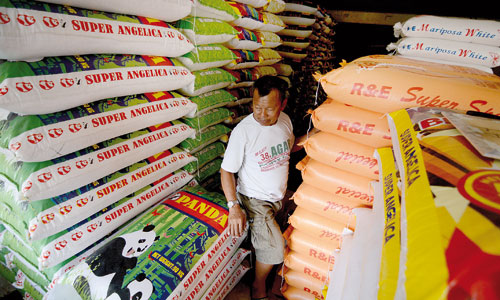Implementation of the Rice Tariffication Law (RTL) has slashed prices of the country’s staple food to the current average of P39 per kilogram or a reduction of about P7 per kg, from its cost in 2018 when it peaked to a per-kilo retail cost of around P46, the Department of Finance (DOF) said.
President Duterte signed the RTL into law on February 14, 2019, as Republic Act No. 11203. The law, which later took effect on March 5, 2019, replaced rice import quantitative restrictions with tariffs.
According to a DOF statement over the weekend, freed from local entrenched interests that took advantage of the protectionist policy on rice for decades, this staple food is now more affordable, especially for low-income Filipinos who spend about 16 percent of their total household budget on rice.
“The RTL was finally achieved after more than 30 years of failed attempts under previous administrations. The law opened up the Philippine rice market and, in turn, reduced the price of our country’s staple food for more than 100 million Filipinos,” Finance Secretary Carlos Dominguez said.
As a result of this reform, which he first proposed three decades ago when he was agriculture secretary, rice is no longer a main contributor to inflation, Dominguez said.
“It took the strong political will of the President for rice tariffication to finally happen for the benefit of our consumers,” he added.
With rice made affordable through the RTL, the National Economic and Development Authority (NEDA) estimates that three years from now, the proportion of malnourished children and population at risk of hunger in the country would be reduced by 2.8 percent and 15.4 percent, respectively.
These estimates are equivalent to around 2.1 million less people at risk of hunger and malnutrition, NEDA said.
Dominguez also said with rice tariffication, the government was able to handle the COVID-19 crisis “with strength on the food security front.”
He pointed out that despite logistical restrictions resulting from the mobility restrictions or lockdowns imposed nationwide to protect people and communities from the pandemic, the government was able to sustain the flow of produce from local farms to Filipino consumers.
The agriculture sector was “one of the brightest spots” of the Philippines’ response to the pandemic owing in large part to the RTL, Dominguez said. – Angela Celis




